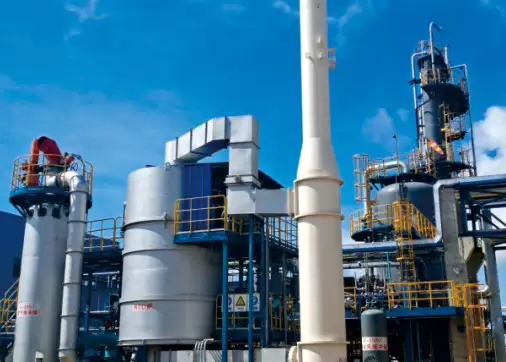What are the future innovations in RTO technology for the printing industry?
The printing industry is constantly looking for ways to reduce their carbon footprint and improve their environmental impact. One of the ways they can achieve this is through the use of Regenerative Thermal Oxidizer (RTO) technology. In recent years, RTO technology has become more advanced and efficient, and companies are now exploring new ways to further improve it. Below are some of the future innovations in RTO technology for the printing industry:
1. Integration with Industry 4.0
- RTO systems are often manually operated, which can lead to inefficiencies and inconsistencies in the way they operate.
- One of the future innovations in RTO technology for the printing industry is the integration of RTO systems with Industry 4.0 technology, such as the Internet of Things (IoT) and Artificial Intelligence (AI).
- This will allow RTO systems to be more automated, with sensors and algorithms monitoring and adjusting the system in real-time for optimal performance.
- The integration of Industry 4.0 technology can also provide data analytics, allowing companies to track their emissions and energy usage more accurately.

2. Improved Heat Recovery
- RTO systems work by oxidizing pollutants in printing exhaust streams and then releasing clean air into the atmosphere.
- One of the challenges of RTO technology is that it requires a lot of energy to heat up the pollutants to the required temperature for oxidation.
- To address this challenge, future innovations in RTO technology for the printing industry will focus on improving heat recovery.
- This can be achieved through the use of more advanced heat exchangers and heat recovery systems, which can capture and reuse the heat generated during oxidation.
- This will result in a more energy-efficient RTO system, with lower operating costs and reduced carbon emissions.

3. Improved Durability and Lifespan
- RTO systems are typically made from materials such as ceramic or metallic, which can be prone to wear and tear over time.
- One of the future innovations in RTO technology for the printing industry is the development of more durable and long-lasting materials for RTO systems.
- This can be achieved through the use of advanced coatings and composites, which can improve the durability and lifespan of RTO systems.
- By improving the durability of RTO systems, companies can reduce their maintenance costs and improve the overall efficiency of their operations.
4. Improved VOC Removal
- RTO systems are designed to remove Volatile Organic Compounds (VOCs) from printing exhaust streams.
- However, some VOCs can be more difficult to remove than others, and may require more energy and resources to break down.
- Future innovations in RTO technology for the printing industry will focus on improving the removal of these difficult-to-remove VOCs.
- This can be achieved through the use of advanced catalysts and chemical processes, which can break down VOCs more efficiently and effectively.
5. Improved System Flexibility
- RTO systems are typically designed for specific printing applications and exhaust streams.
- One of the future innovations in RTO technology for the printing industry is the development of more flexible RTO systems.
- This can be achieved through the use of modular designs and customizable components, which can be adjusted to meet the specific needs of different printing applications.
- By improving the flexibility of RTO systems, companies can reduce their capital costs and improve the overall efficiency of their operations.
Future Innovations in RTO Technology for the Printing Industry
Our company is a high-tech enterprise that specializes in providing comprehensive solutions for the treatment of volatile organic compound (VOC) waste gas and carbon reduction and energy-saving technology. We have four core technologies, including thermal energy, combustion, sealing, and self-control, as well as the ability to simulate temperature fields and airflow fields and to test the characteristics of ceramic heat storage materials, molecular sieve adsorption materials, and high-temperature incineration and oxidation of VOCs.
With our RTO technology research and development center and waste gas carbon reduction engineering technology center in Xi’an and a 30,000m2 production base in Yangling, we are a leading manufacturer of RTO equipment and molecular sieve rotary equipment in the world. Our core technology team comes from the Seventh Academy of China Aerospace Science and Technology Corporation (CASC), which is a research institute for liquid rocket engines. We have over 360 employees, including more than 60 R&D technical backbones, 3 research fellows, 6 senior engineers, and 47 thermodynamics doctors.
Our core products are the rotary valve heat storage oxidation incinerator (RTO) and molecular sieve adsorption concentration rotary wheel. Our company has environmental protection and thermal energy system engineering technology expertise to provide customers with comprehensive solutions for industrial waste gas treatment and carbon reduction and energy-saving utilization under various working conditions.

We have obtained various certifications and qualifications, including knowledge property management system certification, quality management system certification, environmental management system certification, construction industry enterprise qualification, high-tech enterprise, rotary valve heat storage oxidation furnace turning valve patent, rotary wing heat storage incineration equipment patent, disc-type molecular sieve rotary wheel patent, and so on.
When selecting appropriate RTO equipment, the following factors should be considered:
- Determine waste gas characteristics.
- Understand local regulatory emission standards.
- Evaluate energy efficiency.
- Consider operation and maintenance.
- Analyze budget and cost.
- Select suitable RTO types.
- Consider environmental and safety issues.
- Test and verify performance.

Nosso processo de serviço inclui:
- Preliminary consultation, site investigation, and demand analysis.
- Plan design, simulation and modeling, and plan review.
- Custom production, quality control, and factory testing.
- On-site installation, commissioning operation, and training services.
- Regular maintenance, technical support, and spare parts supply.
Our company provides one-stop solutions, and our professional team can customize RTO solutions for customers.
Autor: Miya
